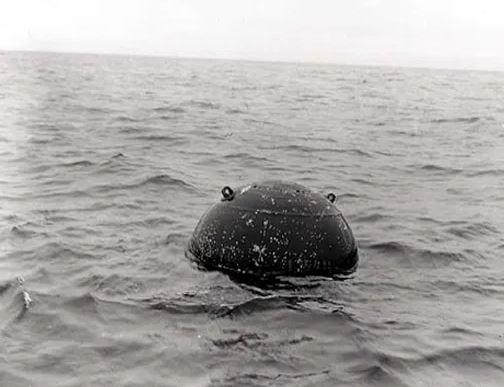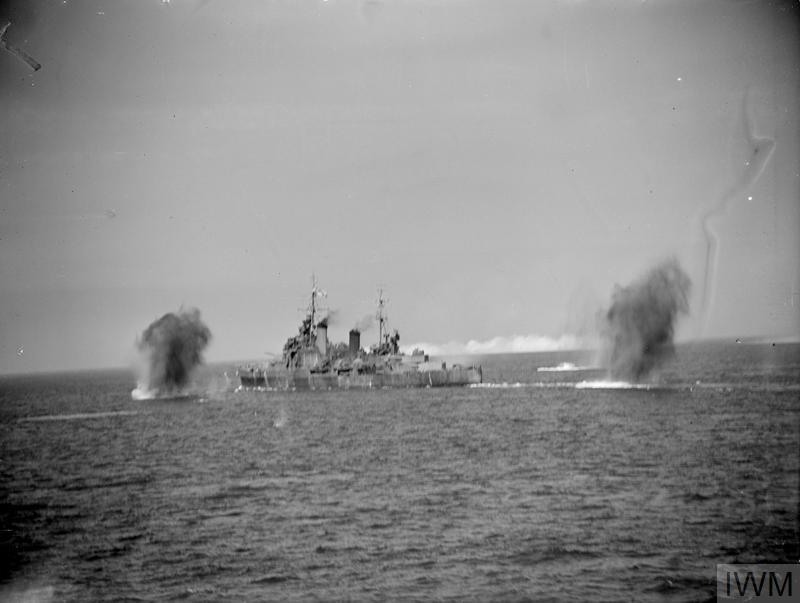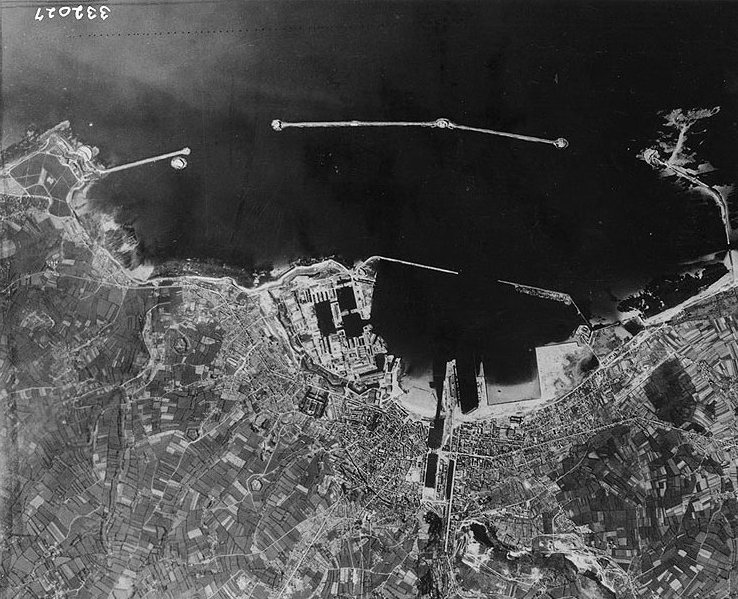
The D-Day map at Southwick house, showing the state of the amphibious assault on Normandy at 7.25am on 6 June. The big white stripe across the English Channel is a German minefield – ten safe channels were cleared through it by RN and RCN minesweepers just before the landings. 

But that wasn't the end of the minesweeper's work. Immediately after the assault, the same flotillas went to work clearing the spaces between the channels and sweeping clear channels between the anchorages off the beaches. 

But the Luftwaffe & Kriegsmarine were fighting back, laying new mines in the Bay of Seine almost nightly. In June alone, bombers attacked the anchorages off the beaches every single night except one, dive bombing ships & laying mines. 📷Dive bomb damage on HMS Bulolo, IWM A24001 

One of their most dangerous weapons was a new type of mine – one that lay on the seabed and was activated by the change in water pressure caused by a ship passing over it. At first the Allies, who named it the Oyster mine, had no means to sweep it. 📷IWM A30625 

In the shallow waters off the beaches, and even inside Mulberry harbour, these mines played havoc with shipping until effective counter measures could be developed. The most effective solution was to slow ships down to reduce their pressure effect. 📷 IWM BU1024 

This didn't impact the build up as much as might be supposed as LCT – the bulk carrier for the build up – were not especially fast anyway. Other countermeasures were soon developed & it was found they could be swept under certain sea conditions. Rough weather helped considerably.
But it meant almost continual work for the minesweeping flotillas, some of whom swept during the day and guarded the defensive Trout Line on the eastern side of the assault area at night. The total number of mines swept is imprecise, but was in the region of 1,500 in June & July. 

But losses to them were severe. In June alone the Allies lost 11 ships to mines & a further 21 damaged. 📷LST 496 sinks by the stern after striking a mine off Omaha Beach. A rhino is alongside rescuing survivors. Original photo by Brian Carter, from his book Saved by the Bomb. 

The minesweepers themselves suffered too, sometimes to mines, sometimes to torpedoes. 7 were lost and 7 damaged in the Battle of Normandy. Perhaps the most tragic loss was on 27 August when RAF Typhoons were ordered to attack a flotilla, with the loss of 3 ships and 78 lives.
Incidentally, I know very little about minesweeping. To get really good insight, follow @Sweepers3945 and @Jack_A_Hunter!
• • •
Missing some Tweet in this thread? You can try to
force a refresh


















